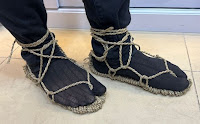Teachers at dojo must be a good example for their students like teachers at school. Your dojo must safe for kids both physical and mental health.
These how to teach self defense and fighting sport for kids properly:
- You must act like real school teacher, be nice.
- Teach your techniques as fun game, for aerobic exercise and for self defense. Not for violence.
- No difficult nonsense theories, no delusional mystic things. Just teach them how to punch and kick (martial art dojo is sport club, not occult sect!!).
- For basic aerobic - self defense clubs, 5 years old is the minimum age requirement to learn basics of self defense, because their mind and body ready for basic self defense training.
- For fighting sport (for pro athletes) clubs, late middle school ages (11-12) is the safest minimum age to doing sparring fight or participate in fighting tournament (with modified-special rules, using very limited techniques for their safety), because your kids now mature enough to respect the tournament rules and control their emotion.
- For martial dance (like Wushu Taolu and Karate Kata) clubs, 5 years old is permitted to join the club but they join for introduction / for fun. 5 years old students are not expected to mastering difficult martial dance forms (Taolu / Kata / Jurus / Poomsae) yet, unlike middle school students.
- For grappling sport (like Wrestling and Judo) club, early high school ages (12-13) is the safest minimum age to start training. Grappling moves relying on raw muscle strength and the student’s body must developed first to training well.

































.png)
.png)
.png)
.png)
.png)
.png)



